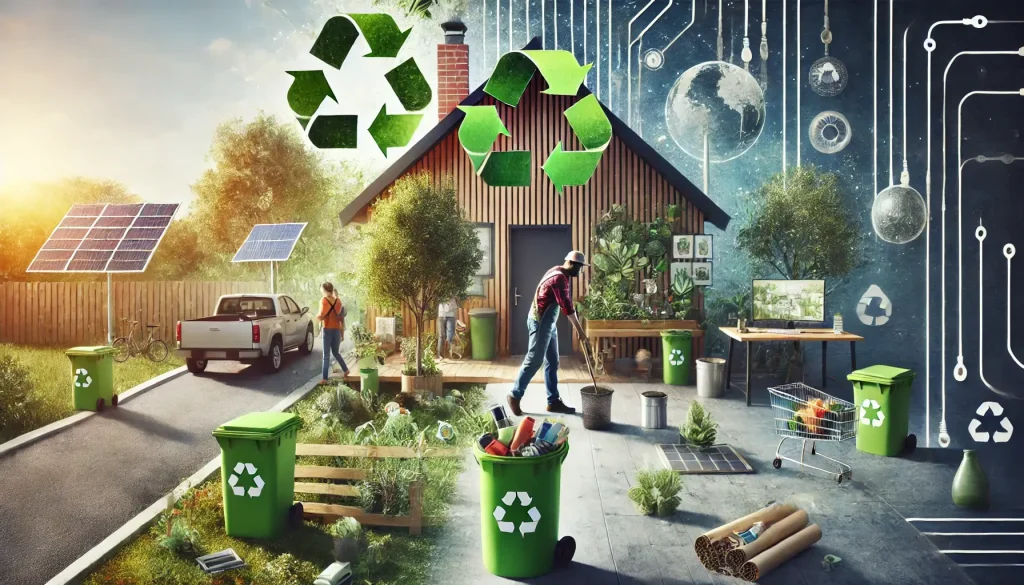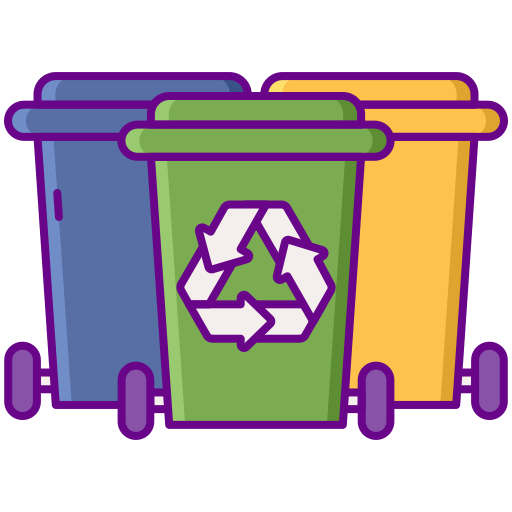In an era defined by environmental urgency and innovative solutions, recycling initiatives play a crucial role in shaping a sustainable future. By transforming waste into valuable resources, we can revive our communities, economies, and ecosystems. At Eu Setor, our commitment to eco-friendly practices inspires us to explore recycling initiatives that not only reduce waste but also contribute to a greener tomorrow.

Index
The Vision Behind Reviving Recycling Initiatives
Recycling is far more than a method of waste management—it’s a dynamic process that breathes new life into discarded materials. The goal to revive our recycling systems stems from the understanding that every item has the potential to be repurposed, ultimately leading to a circular economy. This vision involves:
- Transforming Waste into Resources: Converting used materials into high-quality products.
- Promoting Sustainability: Reducing the need for new raw materials and lowering our environmental impact.
- Inspiring Innovation: Encouraging creative solutions that revive traditional recycling practices through modern technology.
By reimagining how we manage waste, we can revive entire communities and pave the way for a resilient, eco-friendly future.
Key Components of Successful Recycling Initiatives
A comprehensive approach to recycling involves multiple strategies that, when combined, maximize environmental benefits and promote a sustainable cycle of reuse.
1. Collection and Segregation
The first step in any recycling initiative is effective collection and segregation of waste. To revive recycling efforts, it is essential to:
- Implement Community Programs: Establish accessible recycling centers and drop-off points in neighborhoods.
- Utilize Smart Bins: Install bins equipped with sensors that automatically segregate recyclables from general waste.
- Educate the Public: Run campaigns to inform citizens about the importance of sorting recyclables properly to reduce contamination and enhance processing efficiency.
These measures ensure that recyclable materials are efficiently collected and sorted, setting the stage to revive waste streams into usable resources.
2. Advanced Sorting and Processing Technologies
Innovative technology is at the heart of modern recycling initiatives, allowing for a more efficient transformation of waste. Techniques that help revive the recycling process include:
- IoT and Smart Sensors: Real-time data collection in recycling facilities helps optimize collection routes and manage waste flows effectively.
- AI-Powered Sorting: Artificial intelligence enhances material segregation by identifying and sorting recyclables with high precision, reducing errors and improving overall yield.
- Chemical and Mechanical Recycling: Advanced methods break down complex materials into their basic components, making it possible to revive plastics and other substances into high-quality raw materials.
By leveraging these technologies, recycling systems can operate more efficiently, ensuring that more waste is processed and reused.
3. Integration into a Circular Economy
A circular economy is built on the continuous reuse of resources. For recycling initiatives to truly revive waste management, they must be integrated into a circular economic model:
- Closed-Loop Systems: Materials collected from recycling are reintegrated into production, reducing dependency on virgin resources.
- Product Redesign: Encourage manufacturers to design products that are easy to recycle, ensuring that they can be reprocessed at the end of their lifecycle.
- Remanufacturing: Refurbish and upgrade used products to extend their life, thereby reviving items that would otherwise be discarded.
This systemic approach not only revives individual materials but also transforms entire industries by promoting sustainable production and consumption patterns.
4. Digital Transparency and Consumer Engagement
Transparency is key to building trust in recycling initiatives and encouraging participation. Efforts to revive recycling must include:
- Blockchain Technology: Implement blockchain to create a transparent, verifiable record of each step in the recycling process. This accountability motivates businesses to adhere to eco-friendly standards.
- Mobile Apps and Platforms: Digital tools connect consumers with recycling services, providing information on recycling guidelines, tracking contributions, and rewarding sustainable behavior.
- Educational Outreach: Regular workshops, seminars, and online resources help educate communities on the importance of recycling, further encouraging participation and support for green initiatives.
These digital innovations ensure that the recycling process remains open, accessible, and engaging, empowering everyone to play a part in our sustainable future.
Economic and Environmental Impacts of Revived Recycling
The long-term benefits of recycling initiatives that are effectively revived extend beyond waste management. They offer significant economic and environmental advantages:
Environmental Benefits
- Waste Reduction: By diverting materials from landfills, recycling reduces pollution and conserves land for future use.
- Resource Conservation: Recycling minimizes the need to extract new raw materials, preserving ecosystems and reducing habitat destruction.
- Energy Savings: Processing recycled materials generally requires less energy than producing new ones, leading to a lower carbon footprint.
- Biodiversity Protection: Reduced industrial activity helps safeguard natural habitats and promote biodiversity.
Economic Benefits
- Cost Efficiency: Recycling programs lower production costs by reusing materials, which in turn makes eco-friendly products more affordable for consumers.
- Job Creation: The recycling industry generates employment opportunities in areas such as collection, sorting, processing, and remanufacturing.
- Market Innovation: Companies that embrace recycled materials gain a competitive edge, fostering innovation and driving market growth.
- Local Economic Growth: Community-based recycling initiatives stimulate local economies and encourage sustainable business practices.
Social Benefits
- Community Empowerment: Engaging the public in recycling initiatives fosters a sense of ownership and responsibility for environmental conservation.
- Health Improvements: Reduced waste and pollution contribute to cleaner air and water, enhancing overall public health.
- Educational Impact: Increased awareness of sustainable practices inspires future generations to adopt eco-friendly habits and innovative thinking.
Together, these benefits illustrate how reviving recycling initiatives can lead to a more sustainable, resilient, and equitable society.
Case Studies: Reviving Recycling for a Greener Tomorrow
Real-world examples highlight the transformative potential of revived recycling initiatives in various sectors.
Case Study 1: Urban Smart Recycling Program
A major city integrated IoT sensors and AI-powered sorting systems into its waste management infrastructure. This program increased recycling efficiency by 40%, diverted substantial amounts of waste from landfills, and lowered overall operational costs. The success of this initiative demonstrates how smart technologies can revive traditional recycling methods and significantly benefit urban sustainability.
Case Study 2: Closed-Loop Manufacturing in Electronics
A leading electronics manufacturer reengineered its production process to include recycled components, establishing a closed-loop supply chain. By reclaiming and reusing materials from discarded devices, the company reduced its reliance on new raw materials by 60% and achieved significant energy savings. This innovative approach not only revived the manufacturing process but also set new industry standards for sustainability.
Case Study 3: Community-Driven Recycling Hub
In a suburban neighborhood, a community recycling hub was established to promote local participation in waste management. The hub provided educational programs, convenient drop-off points, and digital engagement platforms. This grassroots initiative led to a substantial increase in recycling rates and fostered a strong sense of community commitment to environmental conservation. By reviving local recycling efforts, the initiative contributed to both environmental and social well-being.
Future Directions: Innovations for a Greener Tomorrow
The journey to revive recycling initiatives is ongoing, with emerging technologies and evolving societal values paving the way for future advancements.
Emerging Technologies
- Next-Generation AI and IoT: As these technologies advance, they will further optimize material recovery and operational efficiency in recycling facilities.
- Innovative Chemical Recycling: Breakthroughs in chemical recycling will enable the processing of more complex materials, ensuring that even previously non-recyclable items are given new life.
- Biodegradable Materials: Research into bio-based and biodegradable materials promises to expand the range of eco-friendly alternatives available for recycling, enhancing the sustainability of the entire process.
Policy and Global Collaboration
- International Standards: Developing global standards for recycling will harmonize practices across borders, ensuring that sustainable methods are universally adopted.
- Public-Private Partnerships: Strengthening collaborations between governments, businesses, and communities will drive policy changes and financial incentives that support innovative recycling initiatives.
- Consumer-Driven Change: As awareness of environmental issues grows, consumers will increasingly demand products made from recycled materials, further incentivizing companies to invest in sustainable practices.
Community Empowerment
- Expanded Educational Programs: Continued public education and outreach will empower communities to participate actively in recycling initiatives, ensuring that sustainable practices are embedded in daily life.
- Local Innovation Hubs: Maker spaces and community workshops will play a vital role in sharing ideas and developing new recycling technologies, fostering a culture of environmental stewardship at the local level.
Conclusion: Revive Recycling for a Greener Tomorrow
Recycling initiatives that are effectively revived have the power to transform waste management and create a more sustainable future. By integrating advanced technologies, fostering community engagement, and promoting a circular economy, we can revive our recycling systems to conserve resources, reduce pollution, and build a resilient, eco-friendly society.
At Eu Setor, we are dedicated to pioneering innovative recycling strategies that revive traditional practices and drive sustainable progress. We invite you to join us on this transformative journey—explore cutting-edge recycling initiatives, embrace eco-friendly habits, and contribute to a legacy of sustainability that benefits our planet and future generations.
For more insights, detailed guides, and inspiration on sustainable recycling practices, please visit our website at eu.setorreciclagem.com.br and become part of the Eu Setor community. Let us work together to revive recycling efforts and build a greener, more sustainable tomorrow.
